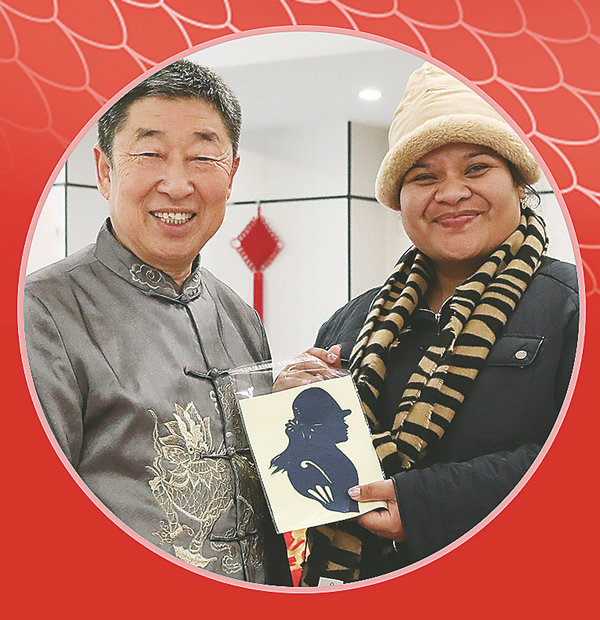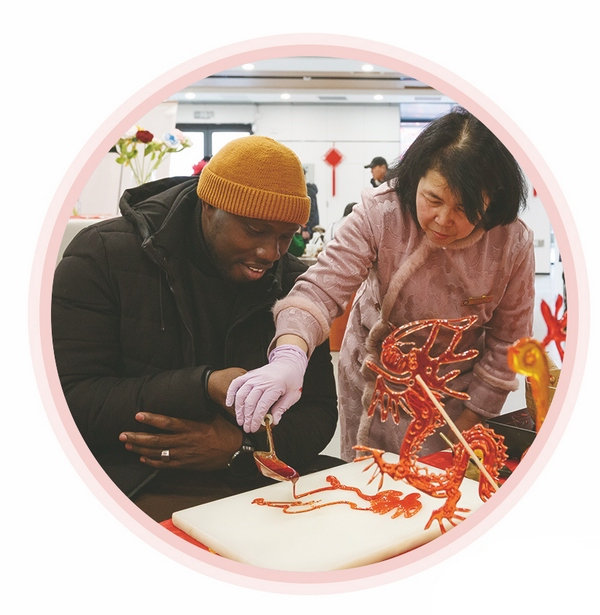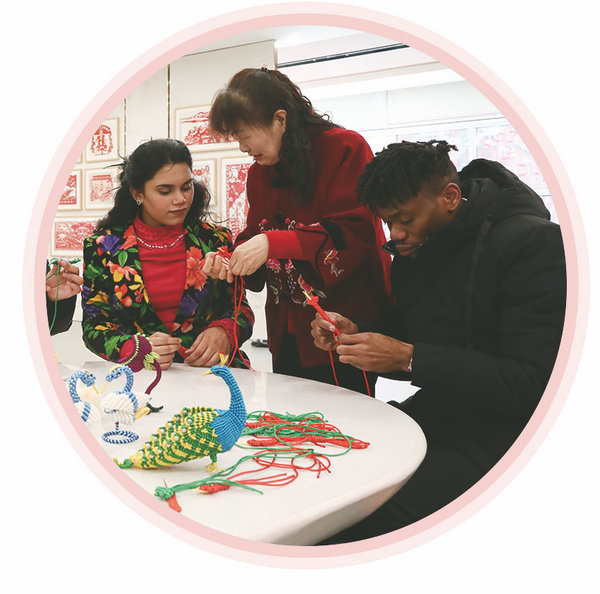

The paper-cutting booth was equally lively. Efremova Iuliia, a Russian student, was thrilled to see the artisan capture her profile with just a few snips of scissors.
"It looks just like me," she said. "This is so much more interesting than taking photos."
Xia Yuchen, a Chinese student majoring in visual communication design at Shenyang Aerospace University, was eager to try the paper-cutting techniques herself.
"Look at the symmetrical structure of this flower pattern and how the negative space is used," she said, admiring her newly cut work. "Traditional Chinese aesthetics are truly remarkable."
This experience also sparked new inspiration for her design work at school. "These traditional patterns, if integrated into modern poster design, would evoke a Chinese vibe that's subtle yet special," she said. "It's fascinating."

As the elderly in the community began performing the yangko dance, Ebele Engourou Jean-Marc from Gabon was instantly drawn to it and decided to join in.
"In Africa, our tribal dances share similar vibrant rhythms," said the aerospace engineering student, moving to the beat. "Dance is truly the most natural way to bridge cultures."

At the sugar painting booth, Saenmaneekoun Somkhit from Laos watched closely as the artisan skilfully drew a majestic Northeastern Tiger on a stone plate with liquid sugar, which quickly hardened and could be peeled off like a lollipop.
"The artisan also made a dragon and a butterfly at our request — it's incredible how he can create such delicate designs using just melted sugar," she said.

Nearby, at the knotting booth, Munkhorgil Munkhjin from Mongolia was deeply focused on learning the traditional Chinese knotting art.
"When I practice the violin at home, my teacher always emphasizes the importance of subtle finger movements. It's the same with these knots — even the slightest change in pressure can affect the entire pattern," he explained while adjusting the tightness of his knot.
When Rin Azuma from Japan saw the Spring Festival couplets at the entrance of the community center, which read, "Harmony among families and neighbors brings prosperity to the nation", he was so touched that he immediately took out his phone to capture the moment.
"This wish for harmony and prosperity resonates not just with Chinese people, but with Japanese people and others around the world," he said.
As the international students said their goodbyes to the community, they left with lasting memories of cultural exchange.
"Today's experience wasn't just a superficial visit; it was a real glimpse into and participation in community life in China," said Tran, speaking in fluent Chinese.
"The beauty of culture is its power to unite young people from different countries, helping them discover a shared language," said Lee Haeng from South Korea.
Liu Shicheng contributed to this story.